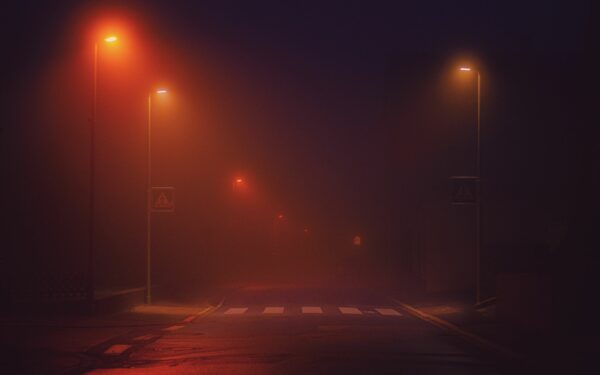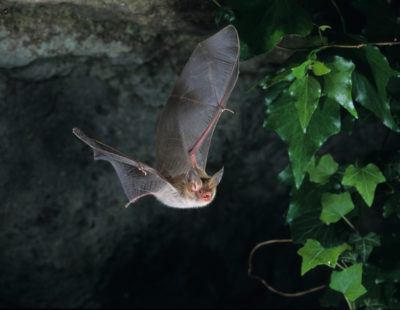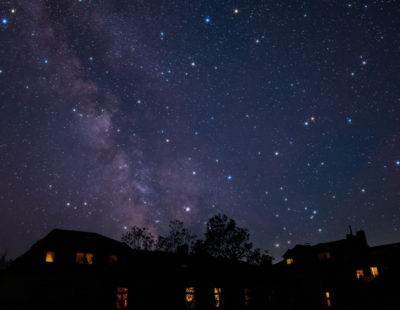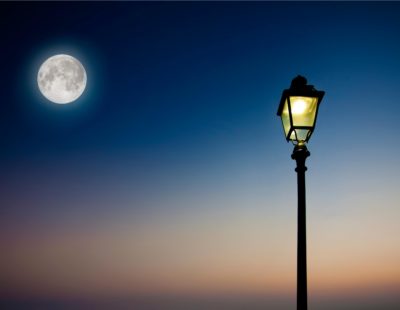In November, the UK’s bats return to their roosts for hibernation, where they will remain for six months before re-emerging in the spring. Both going into, and coming out of, hibernation constitutes a vulnerable time for bat populations, with one of their biggest threats being light pollution. It’s important – both from a legal and an ethical perspective – for property owners and local authorities to understand the impact of artificial lighting on bats. That’s why we’re here to provide a comprehensive overview of the topic.
Why bats are important
Bats form a critical part of the ecosystem. As insectivores, they play a vital role in controlling insect populations – which, if left unchecked, would otherwise wreak havoc on our farms and gardens. Bats can therefore be seen as the first line of defence for our agricultural system, saving farmers vast amounts of money on pesticides and other protective measures.
They also play an important role as pollinators for various plants – some of which are wholly dependent on bats. In addition to this, they also function as seed dispersers and re-foresters for many habitats around the world.
For all these reasons, bats are therefore termed “indicator species”, meaning that we can assess the health of bat populations to gauge the general state of biodiversity in the UK as a whole. Given this importance, it may not surprise you to know that bats in this country come with strong legal protections.
Read more: Bat Hibernation & the Impact of Outdoor Lighting on Bats
Legal protections for bats in the UK & what this means for you
Under the Wildlife and Countryside Act (1981) and the Conservation of Habitats and Species Regulations (2017), it is a criminal offence to harm or disrupt bats. This includes damaging or obstructing a bat roost – of which one of the most common causes is light pollution. Outdoor artificial lighting can cause many serious problems for bats, such as preventing them from leaving their roosts (and thus causing them to starve) or preventing them from entering their roosts (causing them to abandon them and potentially their offspring still inside). Therefore, any artificial lighting that disrupts the flight path between roosts and foraging grounds constitutes an endangerment of bats under the law.
How to limit the impact of outdoor lighting on bats
There are many ways you, as a property owner, can mitigate the impact of outdoor lighting on bats – whether for an existing site or a planned one. Of course, each site is different, and so you need to begin by asking:
- – Do I need the light?
- – What do I need the light for?
- – How much light will I require?
- – When/where do I need the light?
- – What is the species and behaviour of the local bat population?
Variable lighting regimes
The first and most obvious mitigation strategy is simply to opt for no lighting. This can be facilitated by intelligent planning and the consultation of light engineers at the pre-planning stage. Interconnected light exclusion zones can ensure the safe movement of bats between roosts and foraging areas.
However, this is not always feasible. The available lighting options are always contextual to each site. This is where VLR comes in. VLR, which stands for Variable Lighting Regimes, allows for artificial lights to be either dimmed or switched off at various periods (for example, at times when bats are known to leave their roosts).
For this to work effectively, a thorough survey needs to be carried out to accurately assess the habits of the local bat population. When in place, VLR can be used to switch off lights when human activity is low or bat activity is high. Where there is both bat activity and human activity, the lights can be dimmed so as to remain effective for people whilst diminishing their polluting impact on bats. In much the same way, lights can also be equipped with movement sensors. This reduces excess use (and by extension, pollution), by only activating in response to human traffic. Naturally, VLR and movement sensors also save money on electricity for the property owner.
Light type & temperature
To further mitigate the impact of light pollution on bats, consider the type of light that’s being installed. The colour and spectral distribution you opt for will naturally have to find a balance between the environmental and public needs of the site and will therefore be a contextual decision. However, experts generally agree that you should avoid blue-white short wavelength lights in favour of warm long-wavelength lights. A warm colour temperature of <3000K would be ideal.
Furthermore, you should avoid lights with high UV content (such as mercury light), as this attracts and kills insects (preventing them from being consumed by bats). Consider using a UV filter to sharply reduce the amount of UV content from your light.
Light trespass
The direction and angle of your light is also very important, as this determines the level of light trespass. Light trespass refers to light that spills over from the area where it is needed, and can be prevented by ensuring there is no spillage upward of the horizontal plane. Sky glow has a significant impact on insects and, by extension, light-adverse bat species. As a rule, you should ensure that no light is directed above 90°.
More tips: Lighting for Dark Skies – The Ultimate Guide to Dark Sky Friendly Lighting
Progressive lighting solutions from Solareye
At Solareye, we’re passionate about ecologically sensitive light design. Our industry-leading Bat Hat provides a 98% reduction in upwards light spillage whilst maintaining the same level of visibility for cyclists and pedestrians as our standard Solareye80 ground light.
Post-installation monitoring by a county council and local bat group found preferential use of the section of path lit with Solareye80 Bat Hats, as well as an uplift in winter numbers within the nearby roost for the following three years after installation. This low maintenance, easy to install unit requires no electrical supply and is designed to ensure that quality in outdoor lighting does not come at the expense of local wildlife.
For more information on our innovative lighting solutions, don’t hesitate to contact our friendly staff today.
See more: Ecological Light Pollution & the Need for Ecological Outdoor Lighting





